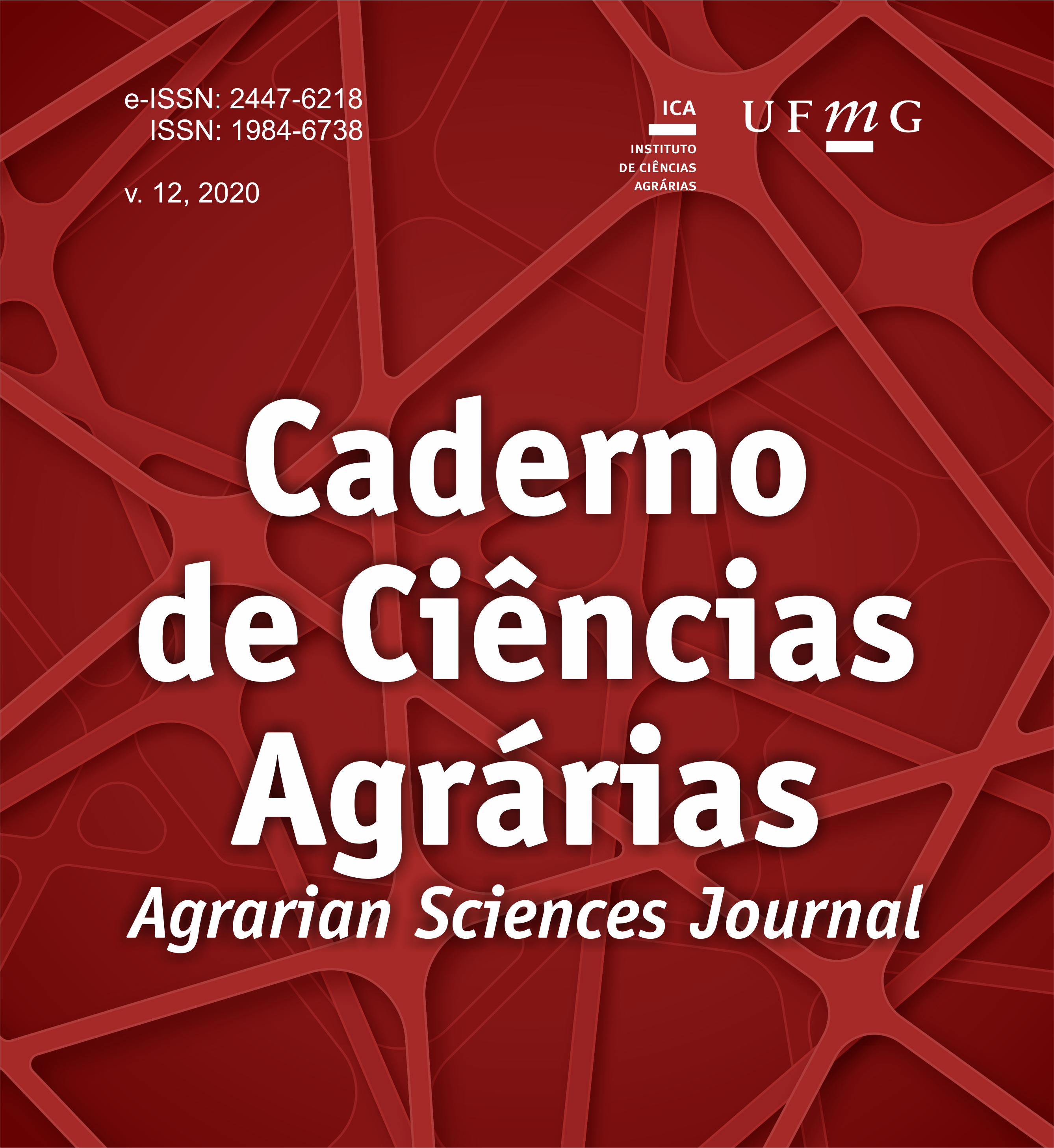Analysis of the presence of activity salivary alpha-amylase enzyme in dogs
DOI:
https://doi.org/10.35699/2447-6218.2020.25948Keywords:
Enzymatic activity, Saliva, StarchAbstract
Alpha-amylase is an enzyme united to calcium that initiates the digestion of carbohydrates in the oral cavity as well as in oral vestibule. In animals, alpha-amylase is secreted by the pancreatic tissue of all vertebrates and by the salivar glands of some. However, it is observed that studies on the presence of alpha-amylase activity in the saliva of dogs are scarce and contradictory between literatures. Accordingly, the aim of this investigation was to identify the presence of alpha-amylase enzyme in dogs. The protocol used to determine the enzyme was described in the specific colorimetric kit and adapted, being used as a basis the modified colorimetric. In this methodology, a reagent kit was used to determine amylase activity, where the saliva sample was incubated with starch substrate and heated to a temperature of 38,9°C, to simulate a dogs average body temperature. By adding the iodine solution, the non-hydrolyzed starch acquires a blue color that decreases proportionally to the enzymatic activity, being compared with a control. With the results obtained from this research, it is possible to conclude that, when performing the laboratory analysis of the samples collected, it was possible to observe that there is no significant presence of alpha-amylase in the saliva of dogs that is capable of hydrolyzing starch.
Downloads
References
Brown, W. 2009. Companion animal nutrition. Applied Animal Nutrition 300/500, 30: 1-15. Disponível em: https://is.gd/sn2Fb7.
Caraway, W. T. 1959. A stable starch substrate for the determination of amylase in serum and other body fluids. American Journal of Clinical Pathology, 32: 97-99. Disponível em: https://is.gd/dBGUXI.
Contreras-Aguilar, M. D.; Tecles, F.; Martínez-Subiela, S.; Escribano. D.; Bernal, L. J.; Cerón, J. J. 2017. Detection and measurement of alpha-amylase in canine saliva and changes after an experimentally induced sympathetic activation. BMC Veterinary Research 13: 266. Doi: https://doi.org/10.1186/s12917-017-1191-4.
Guyton, A. C.; Hall, J. E. 2011. Tratado de Fisiologia Médica. 12. ed. São Paulo: Elsevier.
Júnior, J. W. S.; Lima, L. M. S.; Saad, F. M. O. B. 2006. Fatores fisiológicos que interferem na digestão e aproveitamento do carboidrato em carnívoros domésticos. Revista Eletrônica Nutritime, 3: 331-338. Disponível em: https://is.gd/WBuXjC.
Klein, B. G. 2014. Cunningham tratado de fisiologia veterinária. 5. ed. Rio de Janeiro: Elsevier.
Moriel, P.; Madureira, H. L.; Uwagoya, A. K. Y.; Wlian, L.; Pincinato, E. C. 2010. Influência do fumo na atividade da amilase salivar e na curva glicêmica. Revista de Nutrição, 23: 565-572. Doi: https://doi.org/10.1590/S1415-52732010000400007.
National Research Council. 2006. Nutrient requirements of dogs and cats. National Academy Press.
Ogoshi, R. C. S.; Reis, J. S.; Zangeronimo, M. G.; Saad, F. M. O. B. 2015. Conceitos básicos sobre nutrição e alimentação de cães e gatos. Ciência Animal, 25: 64-75. Disponível em: https://is.gd/XUOd7D.
Pasha, S.; Inui, T.; Chapple, I.; Harris, S.; Holcombe, L.; Grant, M. M. 2018. The saliva proteome of dogs: variations within and between breeds and between species. Proteomics, 18: 3-4. Doi: https://doi.org/10.1002/pmic.201700293.
Reece, W. O. 2017. Dukes: fisiologia dos animais domésticos. 13. ed. Rio de Janeiro: Guanabara Koogan.
Published
How to Cite
Issue
Section
License
Copyright (c) 2020 Agrarian Sciences Journal

This work is licensed under a Creative Commons Attribution-NonCommercial-NoDerivatives 4.0 International License.
Authors who publish in this journal agree to the following terms:
The Copyright for articles published in this journal follow authorship. The articles are open access, with their own attributions, in educational and non-commercial applications.
The journal reserves the right to make regulatory, orthographic and grammatical changes in the originals, with the aim of maintaining the standard language and the credibility of the vehicle. It will respect, however, the writing style of the authors.
Changes, corrections or suggestions of conceptual order will be forwarded to the authors, when necessary. In such cases, the articles, once appropriate, should be submitted for further consideration.
The opinions issued by the authors of the articles are their sole responsibility.







